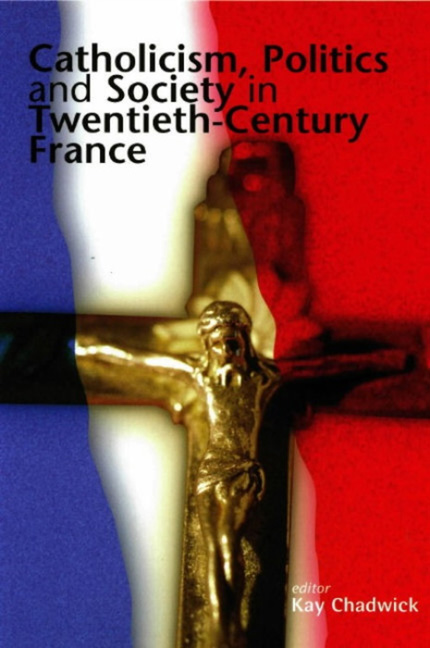Book contents
- Frontmatter
- Contents
- Editor's preface
- Notes on contributors
- Abbreviations
- Introduction
- 1 La laïcité en France au vingtième siècle
- 2 Antisémitisme des catholiques au vingtième siècle: de la revendication au refus
- 3 Catholicism and Nationalism: the Fédération républicaine, 1927–39
- 4 True and false modernity: Catholicism and Communist Marxism in 1930s France
- 5 Ralliés and résistants : Catholics in Vichy France, 1940–44
- 6 Les formes politiques de la démocratie chrétienne en France au vingtième siècle
- 7 Catholicism and the Left in twentieth-century France
- 8 Accueillir l'étranger : immigration, integration and the French Catholic Church
- 9 Yeast in the dough? Catholic schooling in France, 1981–95
- 10 Les femmes catholiques: entre Église et société
- 11 La sociologie religieuse du catholicisme français au vingtième siècle
- 12 Secularisation and the (re)formulation of French Catholic identity
- Select bibliography
- Index
7 - Catholicism and the Left in twentieth-century France
- Frontmatter
- Contents
- Editor's preface
- Notes on contributors
- Abbreviations
- Introduction
- 1 La laïcité en France au vingtième siècle
- 2 Antisémitisme des catholiques au vingtième siècle: de la revendication au refus
- 3 Catholicism and Nationalism: the Fédération républicaine, 1927–39
- 4 True and false modernity: Catholicism and Communist Marxism in 1930s France
- 5 Ralliés and résistants : Catholics in Vichy France, 1940–44
- 6 Les formes politiques de la démocratie chrétienne en France au vingtième siècle
- 7 Catholicism and the Left in twentieth-century France
- 8 Accueillir l'étranger : immigration, integration and the French Catholic Church
- 9 Yeast in the dough? Catholic schooling in France, 1981–95
- 10 Les femmes catholiques: entre Église et société
- 11 La sociologie religieuse du catholicisme français au vingtième siècle
- 12 Secularisation and the (re)formulation of French Catholic identity
- Select bibliography
- Index
Summary
Catholicism in France shifted significantly to the Left over the twentieth century. The evidence for this view is overwhelming, at least in terms of where Catholic priests and laity cast their votes, which public policies they may support or criticise and which intellectual traditions they draw their ideas from. But as a generalisation, this conceals as much as it reveals. The period between the banning of the Sillon (1910) and the removal from office of Mgr Gaillot (1995) saw fundamental changes in the religious and political landscapes. Both French Catholicism and the French Left became more diverse entities, and relations between them appear correspondingly more complex. By the close of the century, Catholicism itself had largely ceased to be a focus for conflict in French politics, even if the ghosts of earlier dissentions occasionally wandered across the front pages. However, the interrelation between religious and political issues did not cease to appear close or contentious. Before tracing the changing relation between Catholics and the Left over the course of the century, in political, social and intellectual terms, it is therefore important to analyse briefly how each of the two protagonists can be understood.
FRENCH CATHOLICISM
Even in relation to 1900, the notion of ‘Catholicism’ embraces a diversity of meanings, although both its representatives and its critics were at different times and for different reasons keen to convey the impression of a homogeneous and monolithic entity. A first distinction may be made between clergy and laity.
Priests and members of religious orders, by virtue of their profession, belong to a formal organisational structure, based on a hierarchy of spiritual authority, whose chain of command leads ultimately to Rome. But far from being a seamless garment, the institutional Church comprises many levels and sectors, whose relations were frequently complex and almost always subject to negotiation. Even authoritative declarations emanating from Rome, for example in the form of papal encyclicals or decrees of Vatican Congregations, are usually the result of often protracted negotiations, and certainly give rise to lengthy processes of interpretation. Between Rome and the French Cardinals and Archbishops, the relationship has been a delicately negotiated one.
- Type
- Chapter
- Information
- Catholicism, Politics and Society in Twentieth-Century France , pp. 142 - 174Publisher: Liverpool University PressPrint publication year: 2000



